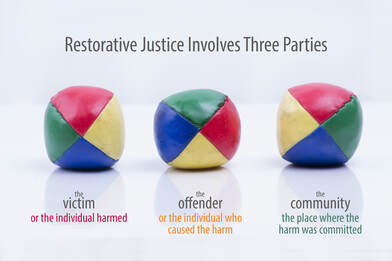 Social-reparative (or restorative justice) processes are largely missing and not taught in Virtual Reality (VR) social platforms (see below for the few resources I could find where this is beginning). Recognizing and addressing micro-conflicts when they occur is a vital ingredient in order to grow healthy and diverse-inclusive VR social environments that not only provide entertainment and reprieve from the high stress lives we are all living, but can also serve as a transformational educational experience for life-skills and knowledge (e.g., STEAM). Allowing that cancel culture is the status quo in social VR apps, we begin to see how this short-term avoidance focus blocks learning and creative development for all of us. Consequences to cancel culture framework include increasingly debase and non-diverse environments that use targeting and power-wielding behavior which maintains a pecking order and produces sporadic and instinctual gang-like or mob-mentality encounters with unprepared users. This default environment grows and maintains a chaotic sense of group and individual identity (i.e., belonging means safety, individuality and independent thought means assault).
At the single-user level, this can look like the following social habits or norms developing in individuals who often can easily identify a difference and amplification of how they treat people online versus in person:
At the group-user level, as in the groups who form common and shared identity, cancel culture creates a survivalist need to maintain connection at the expense of new users who might want to join the group experience or activity. At best, new users are ignored and reflect on a feeling of being left out of a “click” of people. At worst they become targeted by the group for some type of behavior (often unknowingly violating an implicit social norm) that no single group member might have chosen to value or led the group in developing. Real life social graces and customs are inevitably lost that can build and sustain a user’s ability to interactive dependably within their environment. Chaos becomes the only dependable function of social platforms and hedonism and sadistic behaviors (e.g., trolling) become increasingly common. Task-based interaction is one of our first socially connective templates in finding a way to belong together. For example, developmentally we first learn around the age of 2 years old to parallel-play together where we want to be near each another, but not engage in direct interaction. Around 3 years old we learn the benefits of social exchange and the delight that can come in interactive play with a companion. Finally, around 4-5 years old we learn collaborative play processes where we start to build group vision and behaviors that have both higher consequence and reward in how I interact and maintain social order. Similar to these developmental stages, reconciling harmful behavior should allow a user to grow awareness on how their behavior may have offended and go through steps of transforming their reaction into a socially bridging habit. Steps of reconciliation include (for offender):
Steps (for the offended):
Steps for the village/platform/group who allowed offense to occur:
At the heart of all of this is a missing sense of purpose and "path" in real life and in VR. Humans are social creatures who need to grow and find validation in their growth through the reflection of their community. How do you reconcile conflict in VR? Take a survey here to share your stories! Other resources:
0 Comments
Leave a Reply. |
AuthorThese are reflections on VR community design experiments, collaborations, and my individual user experience. How do we connect through the virtual reality medium in a way that enhances our connection with self and our real life relationships? Archives
August 2021
Categories |
 RSS Feed
RSS Feed